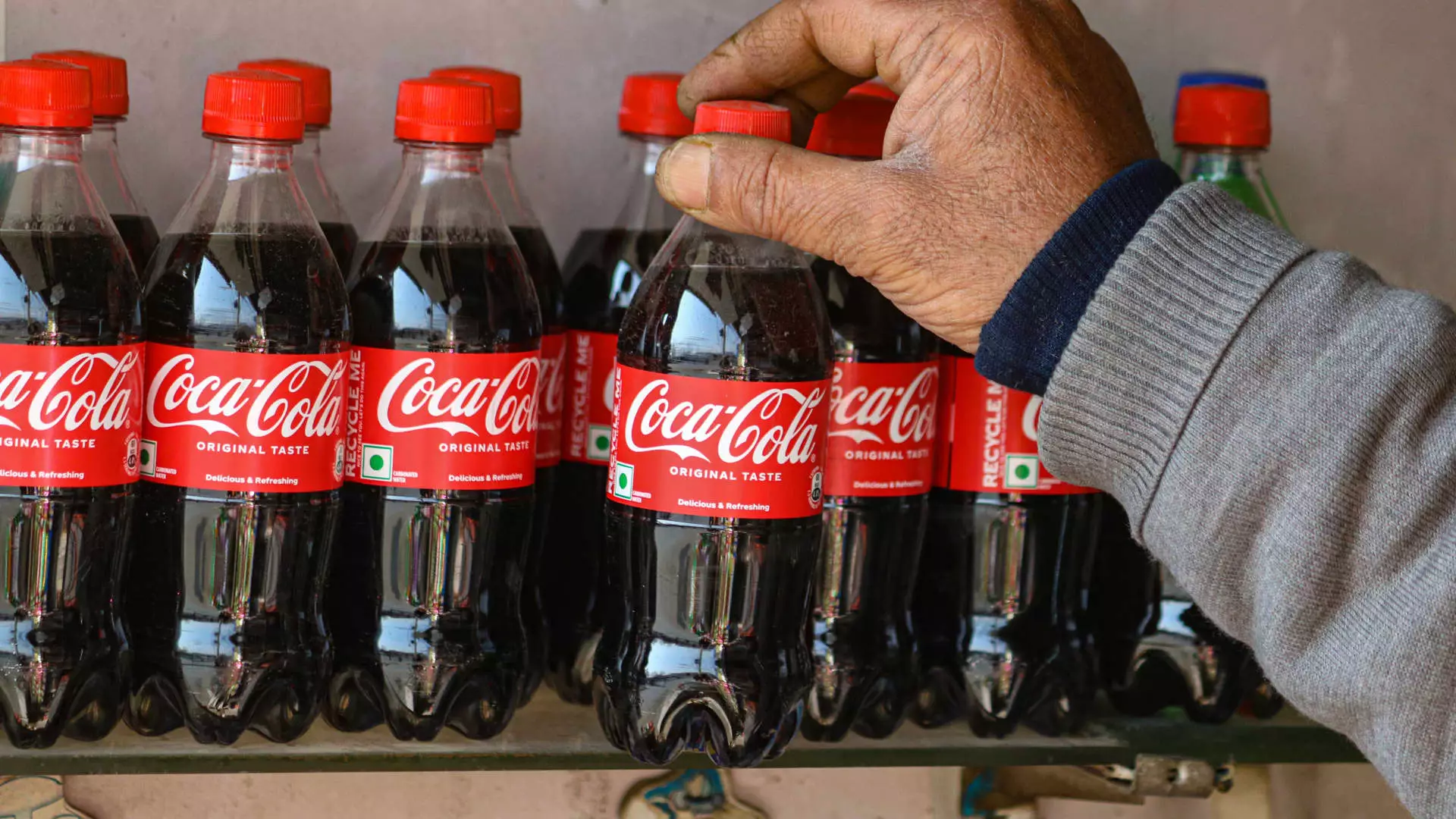Coca-Cola, a behemoth in the beverage industry, is facing significant challenges stemming from recent tariffs on aluminum and steel imported to the United States. CEO James Quincey highlighted a strategic pivot that could involve a substantial shift from aluminum packaging to plastic bottles should these tariffs be enacted. With President Donald Trump’s decision to raise tariffs on aluminum imports from 10% to 25%, the impact on Coca-Cola’s cost structure and sustainability initiatives cannot be understated.
Quincey remarked that the company’s ability to remain affordable to consumers hinges on its diverse packaging portfolio. If the cost of aluminum cans increases due to tariffs, Coca-Cola can pivot to emphasizing PET (polyethylene terephthalate) bottles. This decision reflects not only economic necessity but also reveals the underlying vulnerabilities within the supply chain. The beverage industry thrives on consumer preferences, and any disruption in packaging affordability could jeopardize demand.
Furthermore, the CEO downplayed the potential financial fallout from the tariff increase, suggesting that the implications on Coca-Cola’s vast operations might not be as transformative as some might speculate. For a company that operates on a multibillion-dollar scale, shifting to another packaging material seems feasible. However, this shift raises critical questions about the long-term implications of such a decision—particularly as it relates to sustainability and public image.
Environmental Implications of Plastic Packaging
Coca-Cola’s move towards increased plastic usage, while a practical short-term strategy, stands in stark contrast to its environmental responsibilities. The company has faced severe criticism for its reliance on single-use plastic, earning the infamous title of the world’s worst polluter from Greenpeace. While PET is indeed lightweight and has the added benefit of being recyclable, it still pales in comparison to aluminum in terms of recycling rates. In 2018, the recycling rate for PET bottles was a mere 29.1%, substantially lower than aluminum’s 50.4%.
This paradox poses a dilemma for Coca-Cola as it attempts to balance consumer affordability with environmental stewardship. Increasing the usage of PET bottles contradicts the sustainability goals the company has publicly endorsed. Just months prior, the company slashed its targets for using recycled materials in packaging from a bold 50% to a more modest 35% to 40% by 2035.
From a macroeconomic perspective, Trump’s tariffs are ostensibly targeted at China but effectively ripple through the entire beverage industry. For Coca-Cola, exploring domestic sources for aluminum can mitigate some of the impacts, but it does not erase the underlying pressures of higher material costs. Companies often resort to passing on these costs to consumers, which could lead to higher prices or diminish overall sales volume.
While Coca-Cola has established a reputation for innovation and sustainability initiatives, the current changes in packaging strategy reveal a tension between economic viability and environmental leadership. The fast-paced consumption culture that surrounds products like soft drinks emphasizes accessibility at the expense of ecological considerations.
As Coca-Cola navigates this packaging conundrum, it must reflect on its commitment to sustainability. A robust response to its critics would require not only addressing immediate business concerns surrounding tariffs but also redefining its long-term sustainability objectives. The choice to favor plastic over aluminum reflects a short-sighted approach to an increasingly eco-conscious marketplace.
Moving forward, Coca-Cola can leverage its brand recognition to educate consumers about recycling practices and invest in technologies that enhance the recyclability of PET products. It’s essential for Coca-Cola to not only adjust its packaging strategy but also to take ambitious steps towards developing a circular economy where materials are perpetually reused, rather than abandoned post-consumption.
Coca-Cola stands at a crossroads where it must choose between short-term economic decisions and long-term commitments to sustainability. The ongoing situation with tariffs reveals deeper issues within the beverage industry and invites a broader discussion about the future of packaging in a world grappling with environmental challenges. The company has the potential to lead in eco-innovation, but fulfilling that promise requires more than mere packaging adjustments; it demands a transformational approach to its entire business model.

Leave a Reply